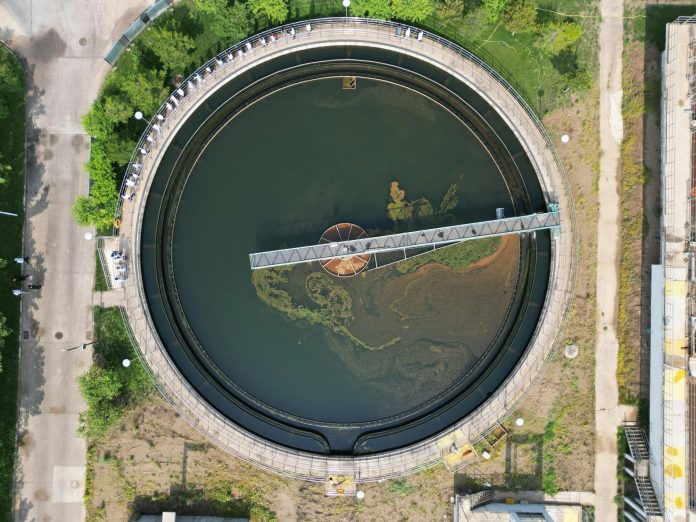Wastewater lagoons are a vital component of municipal and industrial treatment systems. They offer a cost-effective, low-energy method for managing large volumes of wastewater. However, over time, sludge buildup, declining oxygen levels, and hydraulic short-circuiting can significantly compromise lagoon efficiency. Lagoon dredging is a critical maintenance solution that helps restore system performance, reduce treatment costs, and maintain environmental compliance.
This article explores how lagoon dredging enhances wastewater treatment efficiency by improving flow rates, aeration, and sludge removal, while also ensuring long-term operational sustainability.
Pre-Dredging Conditions: Why Efficiency Drops
As wastewater flows into a lagoon, solids settle at the bottom and gradually form a thick sludge layer. Without regular removal, this accumulation disrupts the lagoon’s ability to treat influent effectively. Some of the key performance issues that arise in the absence of dredging include:
- Reduced hydraulic retention time (HRT)
- Decreased oxygen transfer efficiency
- Increased ammonia and BOD levels in the effluent
- Higher risk of anaerobic zones, causing odor and compliance issues
These inefficiencies not only degrade treatment outcomes but also strain secondary treatment processes and increase the likelihood of permit violations.
The Dredging Process in Wastewater Lagoons
Lagoon dredging involves the extraction of accumulated sludge from the bottom of the lagoon to restore its designed volume and flow characteristics. Dredging can be performed using hydraulic dredges, mechanical excavators, or combination systems depending on lagoon design and access.
The process typically includes:
- Sludge mapping and depth assessment
- Deployment of dredging equipment
- Transport of slurry to dewatering or storage locations
- Safe disposal or land application of dewatered biosolids
Modern dredging solutions are engineered to minimize disruption and improve sludge removal precision. For example, contractors often utilize GPS-guided systems and flow meters to optimize dredging operations. When assessing dredging equipment for wastewater lagoons, Celtic Pumps & Dredges provides reliable sludge dredging systems tailored for municipal and industrial lagoon applications. Consider them for efficient and effective dredging solutions.
System-Wide Efficiency Improvements Post-Dredging
Once sludge is removed, wastewater lagoons return to optimal hydraulic function. This has a measurable impact on overall treatment performance:
Restored Hydraulic Flow Rates and Volume Capacity
Dredging eliminates obstructions that hinder water movement, increasing flow uniformity and retention time. This ensures that the wastewater remains in the lagoon long enough for effective biological treatment to occur.
Improved Aeration and Nutrient Breakdown
Thick sludge layers consume oxygen and inhibit mixing, leading to anaerobic pockets. Post-dredging, aeration becomes more efficient, boosting dissolved oxygen levels and supporting aerobic microbial activity for better nutrient removal.
Reduction in Anaerobic Zones and Odor Control
By removing excess organic material, dredging prevents the formation of anaerobic zones where odorous gases like hydrogen sulfide are produced. This is especially beneficial for facilities located near residential areas.
Environmental and Compliance Benefits
Beyond operational improvements, lagoon dredging plays a vital role in helping treatment facilities meet environmental regulations:
- Effluent BOD, TSS, and ammonia levels fall within permitted discharge ranges
- Enhanced capacity reduces the risk of overflow during heavy inflow events
- Facilities avoid costly fines and maintain their permit to operate
Dredging also supports sustainability goals by extending the operational life of lagoon infrastructure and allowing for better biosolid management practices.
Optimizing Long-Term Maintenance Schedules
To maximize efficiency and cost savings, dredging should be part of a facility’s long-term maintenance strategy. Here’s how to plan:
- Sludge Mapping: Conduct annual or biannual surveys using sonar or sludge judges to assess accumulation rates.
- Interval Planning: Most lagoons require dredging every 5–10 years, but high-load systems may need more frequent attention.
- Budget Forecasting: Integrate dredging costs into capital improvement plans to avoid emergency remediation.
Using advanced monitoring tools allows operators to predict when dredging is needed, preventing unexpected system failures.
Conclusion
Lagoon dredging is a proven, effective method to enhance wastewater treatment efficiency. By restoring hydraulic flow, improving aeration, and removing performance-inhibiting sludge, dredging revitalizes lagoons and safeguards compliance with environmental regulations. Integrating it into regular maintenance cycles not only improves treatment outcomes but also ensures long-term operational sustainability for treatment facilities.
For treatment plants seeking to optimize performance and reduce long-term costs, wastewater lagoon dredging is not just a solution—it’s a necessity.



 Bitcoin
Bitcoin  Ethereum
Ethereum  Tether
Tether  XRP
XRP  USDC
USDC  Solana
Solana  TRON
TRON  Lido Staked Ether
Lido Staked Ether  Cardano
Cardano  Avalanche
Avalanche  Toncoin
Toncoin